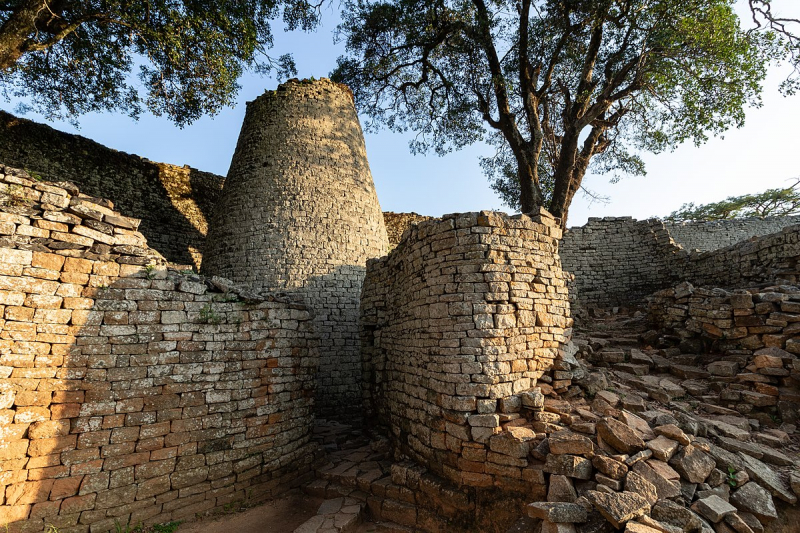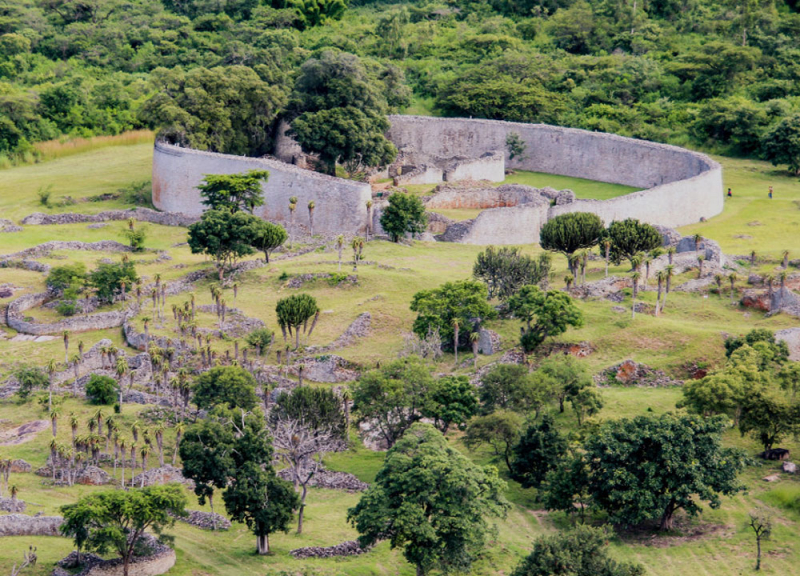Great Zimbabwe Ruins
The stone ruins of an ancient city near Masvingo, Zimbabwe are known as Great Zimbabwe. People first settled in Great Zimbabwe approximately 1100 C.E., but they left in the 15th century. The capital of the Kingdom of Zimbabwe, a Shona (Bantu) commercial kingdom, was the city. In Shona, Zimbabwe means "stone dwellings."
Great Zimbabwe was a part of a vast and prosperous international commerce network. In the remains, archaeologists discovered pottery from China and Persia, as well as Arab coinage. The Zimbabwe Empire's elite dominated trade throughout the east African coast. However, by the 15th century, the city had largely been abandoned as the Shona people had relocated elsewhere. The exact reasons for the abandonment are unknown, but it is likely that exhaustion of resources and overpopulation were contributing factors.
There are various portions to the archaeological site in Great Zimbabwe. The Hill Complex is the initial phase, which consists of a complex of structure remains perched atop the site's sharpest hill. This is widely assumed to have been the site's religious heart. The Hill Complex is the most ancient component of Great Zimbabwe, with architectural evidence dating back to roughly 900 C.E.
The ruins of the Great Enclosure, the second part, are undoubtedly the most interesting. The Great Enclosure is a 14th-century walled, circular region beneath the Hill Complex. The enclosure's walls reach a height of nearly 9.7 meters (32 feet) in certain parts, and its circle is 250 meters (820 feet). The walls were constructed without the use of mortar, relying instead on skillfully shaped boulders to maintain the wall's shape. A second set of walls surrounds the enclosure, following the same curve as the exterior walls and culminating in a stone tower that stands 10 meters (33 ft) tall. While archeologists are unsure of the enclosure's purpose, archeologists believe it may have served as a royal dwelling or a symbolic grain storage facility. It is one of the largest sub-Saharan African buildings still standing.
The Valley Ruins are the third portion. Near the Great Enclosure are the Valley Ruins, which consist of many mud-brick (daga) homes. Great Zimbabwe had a big population, estimated to be between 10,000 and 20,000 individuals, based on the distribution and quantity of homes.
In the ruins, archaeologists discovered some soapstone bird sculptures. These birds are believed to have served a religious purpose and were possibly mounted on pedestals. These birds are national emblems of Zimbabwe and appear on the modern Zimbabwean flag.
In 1986, the ruins of Great Zimbabwe were declared as a UNESCO World Heritage Site by the United Nations Educational, Scientific, and Cultural Organization (UNESCO). It is also one of the most beautiful historical sites in Zimbabwe. The site has only been the subject of a few archaeological explorations.
Location: Zimbabwe







